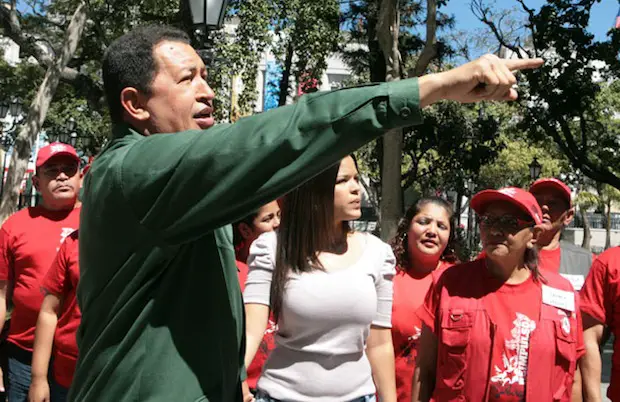A New Movement for The New City: Reallocating Space Away from the Car
Cities have always been shaped by transport; and the planning and design of cities has always impacted on transport choices.
Rising car ownership after the Second World War freed developers from the need to build homes within walking distance of public transport, shops and services; and at the same time, lobbying by car manufacturers, government investment in road building, and changes in planning policy and development economics helped make the car the primary mode of transport.
The negative impacts of rising car ownership and use have long been acknowledged. In 1960 the UK’s Ministry of Transport commissioned a team led by Colin Buchanan to look at the problem, resulting in the publication of Traffic in Towns in 1963. 50 years later the project steering group’s famous acknowledgement that, “We are nourishing at immense cost a monster of great destructiveness. And yet we love him dearly…” still rings true.
Many people continue to aspire to car ownership, or view owning a car as essential to maintaining a high quality of life. And who are we to deny them when electric cars will soon wean us off carbon dioxide emitting toxic fossil fuels?
Cleaner engines may reduce the contribution that car travel makes to carbon emissions and air pollution, but they won’t solve the myriad other negative impacts of car dependency that are neatly summarised in the diagram below from the Royal Commission on Environmental Pollution’s report The Urban Environment (click the following graphics to view full size). Tackling carbon emissions and air pollution is an essential task, but it’s not the only task – the big villain isn’t the internal combustion engine, it’s the car.

One of the major issues that I feel gets too little debate is the inherent unfairness built into a car dominated transport system. The chart below, taken from Sustainable Development Commission’s excellent report Fairness in a Car-Dependent Society, clearly highlights that those that are better off travel the most. As the report notes, the widespread availability and affordability of car travel has brought many benefits, but these have been obtained at a substantial price. A price that falls most heavily on the poorest and most vulnerable – the ones that travel, and therefore benefit, the least.

Similarly, it is those too young or old to drive that are most likely to be killed or seriously injured on our roads (see chart below, again taken from Fairness in a Car-Dependent Society). To borrow a phrase from RoadPeace’s Director, Amy Aeron-Thomas, “We may share the road, but we don’t share the risk.” Risk is unacceptably skewed towards pedestrians and cyclists. Responsibility for minimising risk must by extension fall on those who have the potential to do most harm – motorists.

While no one is seeking to restrict individual freedom of movement, as the SDC argue, that freedom must “be exercised without unduly compromising the rights of others to live free from the negative impacts that travel imposes.”
Even when driven slowly cars dominate our streets and impose themselves on other users. Add speed to the equation and they own the street completely. As a result many people are discouraged from walking and would never contemplate cycling. Statistically walking and cycling may be low risk activities – and the health benefits certainly far outweigh the risks – but no amount of statistics can change the often unpleasant and at times frightening experience of trying to negotiate a street network that has been engineered around the needs of the motorist.
Given this situation it’s little surprise that the majority of people are failing to meet the minimum recommended amount of physical activity required to maintain a healthy weight – at least 30 minutes of moderate intensity activity five times a week.
The costs to the NHS of the UK becoming an increasingly obese nation are widely reported, but the health benefits of being physically active go much further. As Liam Donaldson when Chief Medical Officer states, “The potential benefits of physical activity to health are huge. If a medication existed which had a similar effect, it would be regarded as a ‘wonder drug’ or ‘miracle cure’.”
In responding to the obesity epidemic policy too often focuses on reducing calorie intake, while neglecting the potential benefits of creating a built environment that makes it easy and attractive for people to incorporate physical activity into travel. Yet only by doing this will it be possible to get the whole population active, something that can’t be achieved by exhorting people to join the gym and hoping that Olympic success in 2012 will inspire mass take up of organised sport.
Car dependency can also limit our social lives, as Appleyard and Lintell discovered in 1972 when they studied the correlation between the traffic volume on a street and the relationships between neighbours on that street. The result was perhaps unsurprising; those streets with the heaviest traffic were also the ones where least people interacted with their neighbours.
The social life of cities is, of course, about more than being on first name terms with your neighbours. As Jane Jacobs noted in The Death and Life of Great American Cities, “Lowly, unpurposeful, and random as they may appear, sidewalk contacts are the small change from which a city’s wealth may grow.”
Cities exist to allow people to socialise – people love to be around and to watch other people – how then can we make sure that our streets are places where people want to spend their time and that our cities are great places to live, work and play? Cities need to redefine their relationship with the car – shaping cars and driver behaviour to suit cities, not cities to suit cars. This doesn’t mean banning cars outright, but rather reminding people that when they drive into the city they and their car enter it as guests.
Research by Sustrans and Social Data in 2004 estimated that a car is essential for approximately a third of journeys, such as those that involve moving heavy and bulky loads. The convenience and flexibility that the car can provide means it will always be around in one form or another.
We must, however, begin to address some of the inherent inefficiencies built into a car dominated transport system. Cars take up a lot of space and most of the time they’re occupying that space without even moving. They’re also expensive to own – even before you put any petrol in the tank you have to buy a car and pay Vehicle Excise Duty and insurance.
If a car is only essential for a third of your journeys, why would you need or want to own one? Wouldn’t it be better to use a shared car and in the process have access to a range of vehicles suited to the job in hand? Of course it would, and it’s no surprise that car clubs and pay-as-you-drive schemes are a growth industry.
If the private car’s time is up, the age of the bicycle is just beginning. Bikes, the ultimate form of private urban transport, are space efficient, genuinely zero emissions, healthy, sociable, affordable and fun.
If cities are to realise the potential of the bike as a form of mass transit then they must be welcoming to cyclists of all ages and abilities. Creating the conditions for mass cycling demands reducing traffic speeds and volumes on all streets and building segregated cycle lanes where traffic speeds and/or volumes remain high enough to require them.
Road space in cities is a precious commodity and a highly contested one too, but capacity must to be found to allow the reallocation of road space to bikes and public transport.
Congestion charging in London and elsewhere has been proven to be very effective at reducing traffic volumes. Spare road capacity can then be reallocated to create improved conditions for pedestrians and cyclists and improve the reliability of public transport.

Exhibition Road in London, which was recently converted to shared space
The reallocation of space away from the car will help restore city streets to their proper function as places for people and activity as well as traffic. Streets are complex places, where the conflicting demands of many users must be balanced. On many streets the balance is currently tipped in favour of keeping motor vehicles moving at the expense of other users.
Temporary street closures of all varieties, from the wonderful Playing Out Project in Bristol to Bogota’s much imitated Ciclovia, have an important role to play in helping people imagine a different future; one where the balance is tipped in the other direction, putting the needs of residents, shoppers and workers above the needs of the passing motorist.
Temporary closures can become permanent over time. Each summer for the last ten years Paris has closed a section of the expressway on the banks of the Seine so that it can be turned into an urban beach, the Paris Plage. 2.5km of that expressway is now set to be permanently converted into a pedestrian boulevard.
New York, meanwhile, has been piloting much quicker conversions. Paint, planters and bollards are used to mark out new public spaces and trial potentially controversial schemes that may otherwise never get off the drawing board – sometimes it’s better to seek forgiveness than ask permission.
All of the above ideas and initiatives (and the rest that there hasn’t been space to mention), must be brought together in an integrated sustainable transport strategy. Too often transport policy leaps from project to project, many of them capital intensive big infrastructure projects, without being informed by a coherent vision of how a city’s transport system should serve the city into the future.
Cities must look backwards as well as forwards when setting that vision. It’s easy to fall under the spell of new technology or twiddle our thumbs while we wait for a technological silver bullet like self-driving cars to solve our problems, but much of what is required to establish a sustainable urban transport system and move cities away from car dependency has been around for a long time.
Since the 60s and 70s many cities have been redefining their relationship with the car – particularly in the Netherlands and elsewhere in northern Europe. So a ‘new movement’ has already started, but given the urgent need to address the social, economic and environmental impacts of car dependency it needs to quickly gather momentum. Copenhagen has been in the process of transforming itself for 50 years, it still has some way to go and other cities that are just beginning the process don’t have the luxury of time.
Cities must move as quickly as possible towards achieving the ultimate goal – a liveable city served by a resilient transport network. A network that will help the city respond to the challenges of climate change and peak cheap oil while improving quality of life and reducing inequalities. To paraphrase that great observer of city life William H Whyte, urban transport systems must help cities assert themselves as good places to live.
Bruce McVean is the Founder of Movement for Liveable London.
Top photo: jpctalbot


